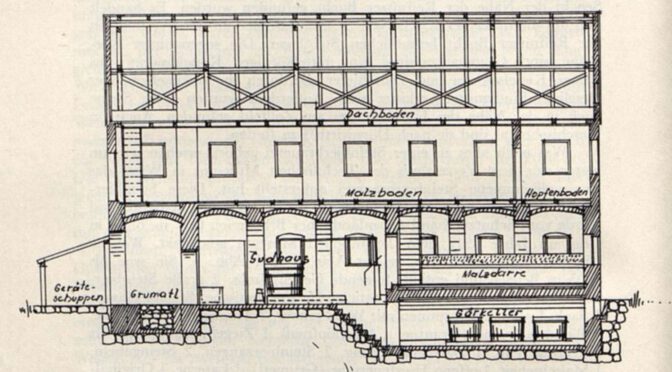Back in 2020, I wrote about how Carinthian Steinbier used to be brewed. In that article, I also mentioned that Steinbier brewing in Carinthia ended in 1917, as brewing ingredients had become unavailable during the war.
I now found concrete data about how much Steinbier was brewed in the last few years of this style’s existence. Fairly detailed data from 1904 to 1917 (with the exception of 1907-1908) about the production volumes of Carinthian breweries were published in trade journals at the time.
The last three remaining breweries were Ure and Kaschitz, both located in Waidmannsdorf, nowadays part of the Carinthian capital Klagenfurt, and Schorn, from Untergoritschitzen near Klagenfurt.
| Year | Ure [hl] | Kaschitz [hl] | Schorn [hl] |
| 1903 | 1,413 | 1,305 | 24.69 hl (1902/1903) |
| 1904 | 1,267 | 1,117 | |
| 1905 | 1,416 | 1,413 | |
| 1906 | 1,359 | 1,289 | |
| 1909 | 839 | 744 | |
| 1910 | 792 | 733 | 106 |
| 1911 | 1,098 | 768 | 168 |
| 1912 | 874 | 704 | 153 |
| 1913 | 810 | 675 | 144 |
| 1914 | 823 | 609 | 154 |
| 1915 | 690 | 372 | 121 |
| 1916 | 744 | 334 | 17 |
| 1917 | 52 |
As you can clearly see in the numbers, before Steinbier brewing ended, it was on an almost steady decline over the course of 13 years. For 1917, the records say that production at Ure and Schorn was shut down, while Kaschitz had produced a mere 52 hectoliters.
Before that time period, we only have spurious records, but even in 1886, the total Steinbier production in Carinthia amounted to just 2474 hectoliters between 11 breweries, and between then and the 1910s, Ure and Kaschitz may have had a tiny boom by being able to fill the gaps left by the other breweries that presumably closed down:
- Kaschitz (Waidmannsdorf): 810 hl
- Ure (Waidmannsdorf): 480 hl
- Marinitsch (Gurlitsch): 435 hl
- Archer (Haarbach): 348 hl
- Kometter (Köttmansdorf): 81 hl
- Jablatnig (Amschkau): 87 hl
- Rovin (Rauth): 64 hl
- Goritschigg (Dobeinitz): 58 hl
- Tritz (Straschitz): 51 hl
- Dobinnig (Haber): 45 hl
- Wedenig (Unterwuchl): 15 hl
Of these breweries, all brewed Steinbier with an original gravity of 6°, with the exception of Wedenig, who brewed a 4° Steinbier.
This low original gravity of Steinbier also seems to show (although not explicitly stated, so this is slight speculation) in the 1889/1890 brewing season beer volume statistics of Austria-Hungary by original gravity: 6° beer was the lowest OG listed, with a production volume of 2,587 hl (which is roughly in the ball park what all the Steinbier breweries together used to brew in a year), and that number is significantly higher than the next stronger beers: of 7° beer, just 49 hl, and of 8° beer, just 102 hl.
In any case, the production volumes are tiny, the numbers are going down, all clear signs of a declining “industry” that was really closer to homebrewing, serving what was probably a tiny market of aging consumers. Despite the fact that brewing stopped because of a lack of ingredients during World War 1, the tiny volumes were probably a big contributor to not resuming brewing after the war.


Thank you for digging this up. Very valuable numbers.
I’m surprised to see Ure was the biggest brewery — it’s always Kaschitz you hear about. But perhaps that’s because it was the brewer at Kaschitz who was interviewed.
The decline isn’t really that steep: 2474 hl total in 1886, and over 1500hl in 1913, 27 years later. The “industry” was definitely declining, but not very rapidly. If it hadn’t been for the war it looks like they would have kept going at least another decade or so.
But I agree that if these had been massively profitable businesses then of course they would have started again in 1918.